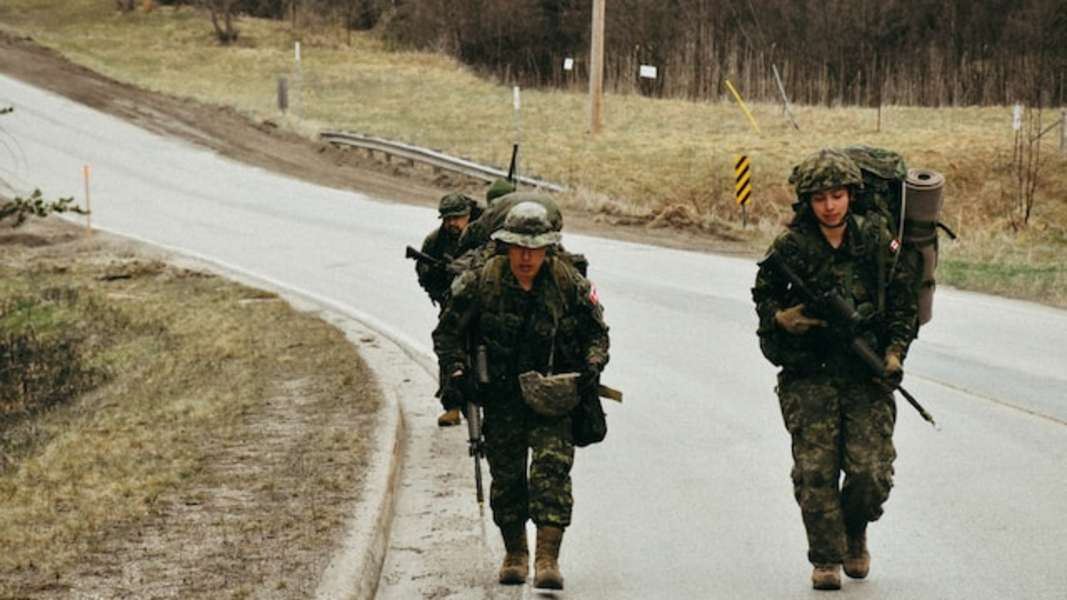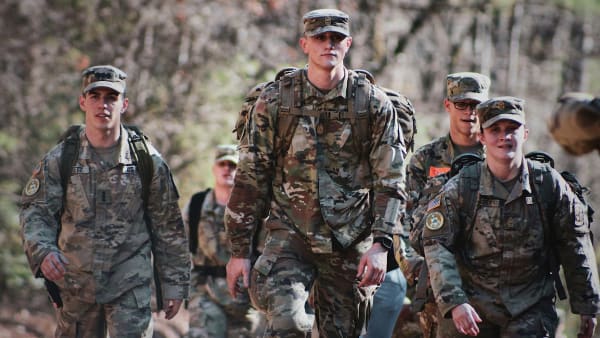What is the Army Alphabet (NATO Phonetic Alphabet)?
Developed by the International Civil Aviation Organization (ICAO) and adopted by NATO in 1956, the Army Alphabet is a strict protocol of standardized code words used when communicating letters or numbers in the English alphabet.
The Army Alphabet was initially developed to help air traffic controllers and pilots communicate clearly with one another. The final version of the Army Alphabet was decided following contributions from over 30 countries. The final decision on which words would represent which letter was down to whether a word would be understood by all in isolation or wider context.
Also known as the NATO Phonetic Alphabet or the International Radiotelephony Spelling Alphabet, many have now adopted the alphabet to aid in communicating words in daily life when speaking over the phone or via radio.
Why is the NATO Phonetic Alphabet important?
The army alphabet brings many benefits to those who use it daily.
When using the NATO Phonetic Alphabet, each letter of the English alphabet is represented by a clear and distinct code word, making it far easier to communicate important information accurately and for this information to be correctly understood by the intended recipient.
A key benefit is that it helps to eliminate confusion and misunderstandings when communicating over the radio or via telephone. In these environments, it can be difficult to hear or understand certain letters, especially in noisy or chaotic environments such as those faced by individuals working in the military.
Internationally recognized, the Army alphabet also serves as a common language between different countries and organizations, ensuring clear and effective communication when communicating with those from a different culture or language background.
Above all, the importance of the NATO Phonetic Alphabet is its ability to aid communication efficiency and accuracy in critical situations. In situations such as those faced in military operations, emergency services, aviation, or other fields where communication is essential, the ability to clearly and effectively convey information can have life-changing consequences.
The use of an internationally recognized and standardized phonetic alphabet ensures that information is transmitted accurately, even in the most challenging environments.
The NATO Phonetic Alphabet
The NATO Phonetic Alphabet consists of 26 code words, one for each letter of the English alphabet.
- A - Alpha (pronounced ''Al-Fah'')
- B - Bravo (pronounced ''BRAH-voh)
- C - Charlie (pronounced ''CHAR-lee'')
- D - Delta (pronounced ''DEL-tah'')
- E - Echo (pronounced ''EKK-oh'')
- F - Foxtrot (pronounced ''FOKS-trot'')
- G - Golf (pronounced ''Golf'')
- H - Hotel (pronounced ''HO-tel'')
- I - India (pronounced ''IN-dee-ah'')
- J - Juliet (pronounced ''JEW-lee-ett'')
- K - Kilo (pronounced '' KEY-loh'')
- L - Lima (pronounced LEE-mah'')
- M - Mike (pronounced (''Mike'')
- N - November (pronounced ''NOH-vem-ber'')
- O - Oscar (pronounced ''OSS-car'')
- P - Papa (pronounced ''PAH-pah'')
- Q - Quebec (pronounced ''keh-BECK'')
- R - Romeo (pronounced ''ROW-me-oh'')
- S - Sierra (pronounced ''see-AIR-ah'')
- T - Tango (pronounced ''TANG-go'')
- U - Uniform (pronounced ''YOU-nee-form'')
- V - Victor (pronounced ''VIK-ter'')
- W - Whiskey (pronounced ''WISS-key'')
- X - Xray (pronounced ''EKS-ray'')
- Y - Yankee (pronounced YANG-kee'')
- Z - Zulu (pronounced ''ZOO-luu'')
Numbers are pronounced as normal, apart from 9 which is pronounced "Niner" so it doesn't get confused with 5.
How To Use the NATO Phonetic Alphabet in Military Communication
Spelling Out Words and Codenames
Before using the NATO Phonetic Alphabet, try saying the entire word before you use the code words to spell it out. When using the alphabet, substitute the word for the corresponding letter when spelling out a word.
For example, when spelling would the word 'ant, instead of saying "A as in apple," you would say "Ant", "Alpha," November", "Tango"
Using the phonetic alphabet in this way ensures that there is no miscommunication or misunderstanding of words or commands.
Confirming or Clarifying Information
Before using the alphabet, make sure the person you are communicating with knows you are about to use the phonetic alphabet. For example, if someone says "Juliet," but to you, it is unclear if they meant the letter J or the name Juliet, seek clarification. Ask them to spell out the word using the phonetic alphabet.
Enhancing Communication in Noisy or Challenging Environments
Be clear and concise when communicating over the radio or in a noisy environment and using the NATO phonetic alphabet. It is important to speak slowly and pronounce each code word clearly using the appropriate phonetic pronunciation. Don't use words that aren't part of the standardized NATO phonetic alphabet, as this could cause further confusion.
Learning the NATO Phonetic Alphabet
There are a few things that you can do to help you learn the NATO phonetic alphabet so that it becomes second nature to you and enhances the accuracy of your verbal communication skills.
These include:
Memorization Techniques
Instead of trying to learn the full 26 code words, try splitting the alphabet into smaller groups of five letters. For example, you could group A - E (Alpha, Bravo, Charlie, Delta, Echo), F-J (Foxtrot, Golf, Hotel, India, Juliet), and so on.
Memorizing smaller groups of letters can be far easier than trying to memorize all 26 in one go.
Repetition and practice
Practice using the NATO Phonetic Alphabet regularly to ensure it becomes second nature. Try using the phonetic alphabet when spelling out words in your daily life. If you are out driving and stuck in traffic, practice the army alphabet by phonetically reading our car registration plates.
Through repetition and practice, you can master using each code word in the alphabet so they become second nature to you.
Flashcards and quizzes
You can use flashcards and quizzes to improve your proficiency in using the phonetic alphabet. Make flashcards by adding photos to the start of each letter to provide a visual aid for remembering the phonetic alphabet. Or create a quiz for yourself by listing ten letters randomly from the alphabet on a piece of paper. Then, add the correct code word from the NATO phonetic alphabet to each letter.
Practicing with friends and colleagues
Master the army phonetic alphabet by asking your friends or colleagues to help. Get them to say a letter from the alphabet; you must respond with the correct code word for the letter. Or, ask them to say a word out loud. You must then spell the word using the NATO phonetic alphabet code words.
Adaptation in Non-Military Industries
As the NATO phonetic alphabet eliminates ambiguity when communicating verbally, the alphabet has been adopted as standard practice in many non-military working environments.
These include customer service and contact centers where efficient and timeline communication is essential in providing an effective customer service experience. For example, when taking a card payment or contact details such as a postal or email address.
Industries within banking and healthcare can also benefit from using the NATO phonetic alphabet.
In these industries, miscommunication of information can have extreme consequences; using the army alphabet ensures that verbal instructions are carried out correctly.






